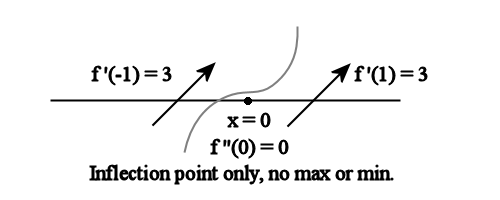How do you find the exact relative maximum and minimum of the polynomial function of #f(x)= 2x^3-3x^2-12x-1#?
1 Answer
We use the first derivative to find all the critical points, and the second derivative to sort them in to maxima, minima and inflection points.
Explanation:
There are two things that we know about relative maxima and minima. The first is that the slope (first derivative) will be zero, but this alone is not sufficient. There are cases, known as inflection points where the slope is zero but the function continues to either increase or decrease.

This is why the second piece of information is so important - the curvature (second derivative) must be non-zero. We can start by finding all of the critical points of our function and then eliminating the inflection points:
We use the quadratic equation to find the
We then test these values in the second derivative:
From this we determine that the critical point at
We can now use these
So the points are:
relative minimum at
relative maximum at
graph{2x^3-3x^2-12x-1 [-5, 5, -25, 15]}

